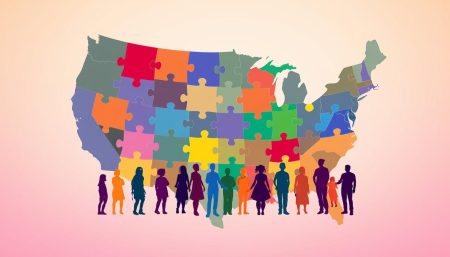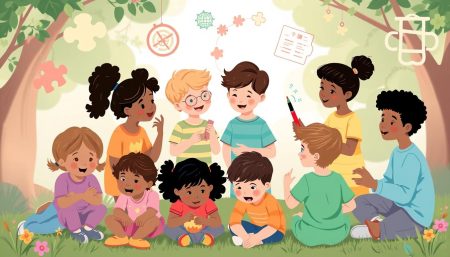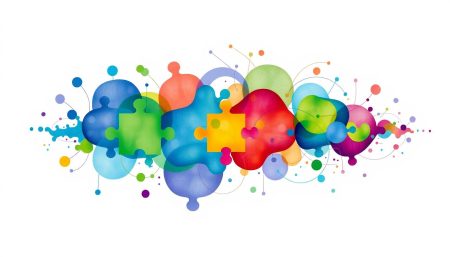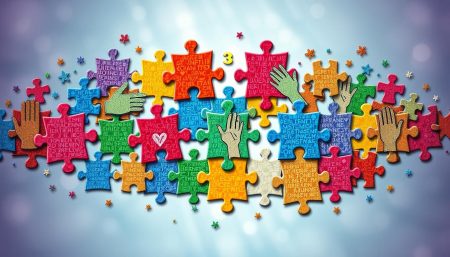Autism spectrum disorder (ASD) affects millions globally. If you’ve ever wondered, “Do I have autism?” you’re not alone. Many adults and parents of children seek answers about autism symptoms and signs.
Recognizing autism signs can be tricky. ASD presents differently in each person. Some common autism symptoms include challenges in social interaction, repetitive behaviors, and unique communication styles. Understanding these signs is the first step in getting the right support.
This guide will help you explore autism spectrum disorder, its signs, and when to seek professional help. Remember, only a qualified healthcare provider can diagnose ASD. If you suspect autism in yourself or a loved one, reach out to a doctor for guidance.
Understanding Autism Spectrum Disorder: A Comprehensive Overview
Autism spectrum disorder is a complex condition that affects how people interact and communicate. It’s called a spectrum because it includes a wide range of symptoms and abilities. Let’s dive into what ASD is, its spectrum nature, and current statistics.
What is Autism Spectrum Disorder (ASD)?
ASD is a neurodevelopmental disorder that impacts brain development. People with autism may struggle with social skills, repetitive behaviors, speech, and non-verbal communication. The severity of symptoms varies greatly from person to person.
The Spectrum Nature of Autism
Autism is not a one-size-fits-all diagnosis. It includes a range of conditions, from high functioning autism to more severe forms. Some individuals might need significant support in daily life, while others can live independently. This spectrum nature means that each person with autism has a unique set of strengths and challenges.
Current Statistics and Prevalence
Autism affects millions of people worldwide. In the United States, about 1 in 36 children are diagnosed with ASD. It’s more common in boys than girls, but research suggests this gap may be due to underdiagnosis in girls. As awareness grows, so does the number of adults diagnosed with autism spectrum disorder later in life.
| Age Group | Prevalence |
|---|---|
| Children | 1 in 36 |
| Adults | 1 in 100 |
Do I Have Autism: Common Questions and Concerns
Many people wonder, “Do I have autism?” This question comes up when they notice behaviors or traits that seem like autism spectrum disorder (ASD). It’s key to know that self-diagnosis isn’t reliable. Getting a professional evaluation is essential for a correct diagnosis.
Some common questions people ask when thinking they might have autism include:
- Why do I struggle with social interactions?
- Is my intense focus on specific topics a sign of autism?
- Could my sensory sensitivities be related to ASD?
- Why do I find it challenging to understand non-verbal cues?
These concerns might suggest autism, but they could also point to other conditions. The best way to find out is through an autism test given by a healthcare professional.
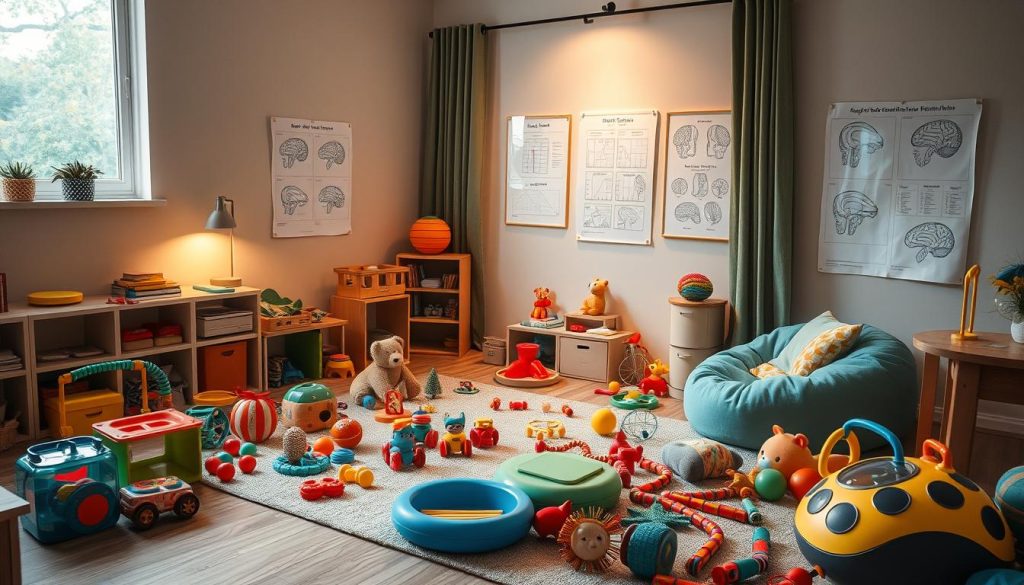
If you’re thinking about getting an autism test, here’s what it might cover:
| Evaluation Component | Description |
|---|---|
| Clinical Interview | Discussion of developmental history and current concerns |
| Behavioral Observation | Assessment of social interaction and communication skills |
| Cognitive Testing | Evaluation of intellectual abilities and thinking patterns |
| Adaptive Functioning Assessment | Examination of daily living skills and independence |
Remember, the first step is to seek professional help. This is how you can understand yourself better and get the support you need.
Early Signs of Autism in Children and Toddlers
Spotting autism signs early can greatly improve a child’s future. Parents should look out for certain behaviors that might show autism spectrum disorder (ASD). These signs often show up before a child is three years old.
Social Communication Markers
Children with autism might find it hard to connect with others. They might not make eye contact, ignore their name, or struggle to understand facial expressions. Some kids might not point at things or show interest in sharing with others.
Behavioral Patterns to Watch For
Some behaviors can hint at autism in kids. These include repetitive actions like hand-flapping or rocking. Kids might also line up toys or get upset by small changes in their routine. Unusual interests or strong attachments to certain objects are also common.
Development Milestones
Delayed milestones can be a warning sign for autism. This includes late talking, little babbling, or not using gestures by 12 months. Some children might lose skills they once had, like words they used to say.
| Age | Typical Development | Possible Autism Signs |
|---|---|---|
| 6 months | Responds to sounds, smiles at people | Limited facial expressions, no social smiles |
| 9 months | Babbles, plays peek-a-boo | No babbling, no back-and-forth gestures |
| 12 months | Says single words, points at objects | No words, doesn’t point or wave bye-bye |
| 24 months | Uses 2-word phrases, plays pretend | No 2-word phrases, no pretend play |
Recognizing Autism Symptoms in Adults
Many adults with autism, like those with Asperger’s syndrome, often go unnoticed. They might hide their symptoms, making it hard to spot them. Knowing these signs can help get the support they need and improve their life.

Adults with autism might find social interactions tough. They could have trouble keeping eye contact or understanding body language. They might also have strong interests and prefer things to stay the same.
They can be very sensitive to certain sounds, lights, or textures. This can affect how they react to their surroundings.
When it comes to talking, adults with autism might speak in a flat tone. They might struggle with sarcasm or understanding jokes. But, they can also be very good at focusing on specific tasks.
| Common Symptoms | Possible Manifestations |
|---|---|
| Social Challenges | Difficulty making friends, maintaining conversations |
| Routine Adherence | Strict schedules, distress with changes |
| Sensory Issues | Oversensitivity to lights, sounds, or textures |
| Communication Style | Literal interpretation, trouble with sarcasm |
If you see these signs in yourself or someone else, it’s time to get a professional check-up. Spotting autism in adults early can help them get the right support. This can greatly improve their happiness and overall well-being.
Social Communication and Interaction Challenges
People with autism often face unique social communication challenges. These challenges can affect daily interactions and relationships. It’s important to understand these difficulties to support individuals on the autism spectrum.
Difficulty with Non-verbal Communication
Many autistic individuals struggle to understand non-verbal cues. They might have trouble keeping eye contact or reading facial expressions. This can cause misunderstandings in social situations.
Problems Maintaining Relationships
Building and keeping friendships can be tough for those with autism. They might find it hard to share interests or have two-way conversations. These barriers can make it hard to form lasting connections.
Social Anxiety and Isolation
Autistic people often feel anxious in social situations. They may feel overwhelmed in groups or struggle to start conversations. This can lead to feeling isolated and withdrawn.
| Social Communication Challenge | Impact on Daily Life |
|---|---|
| Difficulty reading body language | Misinterpreting others’ intentions or emotions |
| Trouble with turn-taking in conversations | Interrupting others or dominating discussions |
| Literal interpretation of language | Misunderstanding sarcasm or idioms |
| Difficulty with small talk | Appearing aloof or uninterested in social settings |
Behavioral Patterns and Repetitive Behaviors
Autism signs often include distinct behavioral patterns and repetitive behaviors. These traits are key in diagnosing autism spectrum disorder (ASD). They can greatly affect daily life. People with ASD may show a variety of repetitive behaviors that differ from their neurotypical peers.

- Hand flapping or finger flicking
- Rocking back and forth
- Spinning objects or self-spinning
- Lining up toys or objects in a specific order
- Repeating words or phrases (echolalia)
These behaviors often act as coping mechanisms or ways to self-regulate. They may offer comfort or help manage sensory overload. While some repetitive behaviors are harmless, others can hinder daily activities or social interactions.
It’s vital to recognize these autism signs for early intervention and support. If you notice persistent repetitive behaviors in yourself or a loved one, talking to a healthcare professional is a good step. Understanding these patterns can lead to better strategies for managing ASD and improving quality of life.
Sensory Processing Differences in Autism
Sensory processing is very important in autism. People with autism see the world in their own way. This can affect their daily life and how they interact with others.
Hypersensitivity to Stimuli
Many with autism are very sensitive to sensory inputs. Things like loud noises, bright lights, or certain textures can be too much. This can cause sensory overload and lead to distress or meltdowns.
Hyposensitivity Patterns
Some people with autism might not feel things as much. They might not feel pain, temperature changes, or loud sounds. This can be dangerous because they might not notice dangers around them.
Sensory Seeking Behaviors
Some with autism seek out intense sensory experiences. They might spin, rock, or seek deep pressure. These actions help them feel better and focus.
| Sensory Type | Example Behavior |
|---|---|
| Hypersensitive | Covering ears in noisy environments |
| Hyposensitive | Not noticing extreme temperatures |
| Sensory Seeking | Enjoying tight hugs or weighted blankets |
It’s key to understand these sensory differences in autism. It helps make places more welcoming and find ways to manage symptoms.
High-Functioning Autism and Asperger’s Syndrome
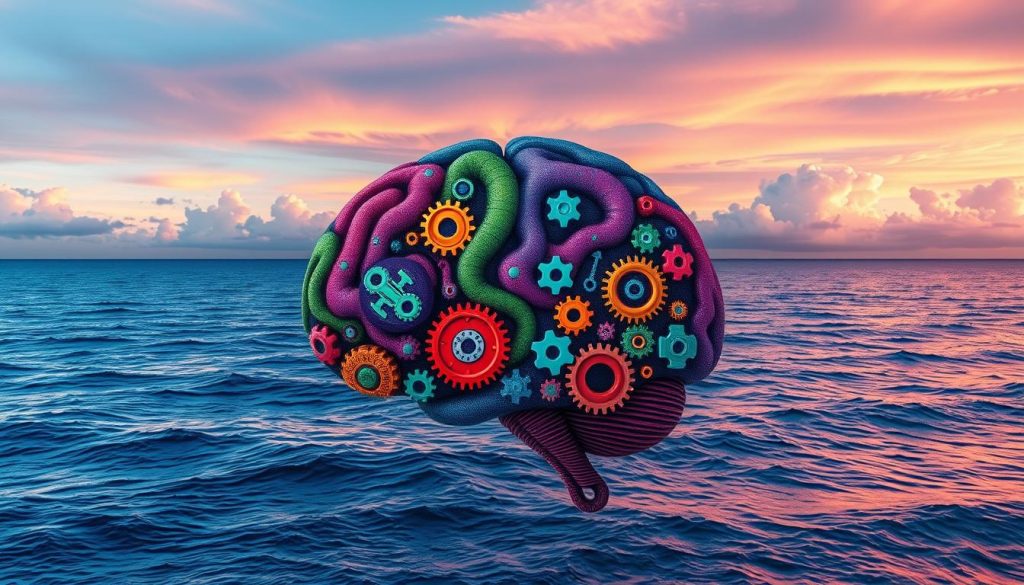
High functioning autism and Asperger’s syndrome are part of the autism spectrum. People with these conditions often have strong cognitive abilities but face social challenges. They may excel in specific areas like math, science, or art.
Those with high functioning autism typically have average or above-average intelligence. They might struggle with social cues but can learn to navigate social situations. Asperger’s syndrome, once a separate diagnosis, is now considered part of the autism spectrum.
Common traits of high functioning autism and Asperger’s syndrome include:
- Strong focus on specific interests
- Difficulty understanding social norms
- Preference for routines
- Unique communication styles
It’s important to note that each person is unique. Not everyone with high functioning autism or Asperger’s syndrome will show all these traits. Many lead successful, independent lives and contribute greatly to their communities.
| Characteristic | High Functioning Autism | Asperger’s Syndrome |
|---|---|---|
| Language Development | May have early delays | No significant delays |
| Cognitive Abilities | Average to above average | Average to above average |
| Social Interaction | Challenging | Challenging |
| Special Interests | Often present | Often intense |
Understanding these conditions helps create a more inclusive society. It allows us to appreciate the unique perspectives and skills that individuals with high functioning autism and Asperger’s syndrome bring to our world.
Gender Differences in Autism Presentation
Autism in adults shows different signs in men and women. Studies reveal unique patterns in how autism appears in women, girls, and men. Knowing these differences is key for correct diagnosis and support.
Autism in Women and Girls
Women and girls with autism often have milder signs. They might hide their symptoms, a behavior known as “camouflaging.” This makes finding the right diagnosis hard. Some common traits include:
- Strong interests in animals or people, not objects
- Better social skills, but feel anxious in social settings
- Prefer passive behavior over meltdowns
- Have vivid imaginations and elaborate pretend play
Male-specific Manifestations
Boys and men with autism usually show clearer signs. Their traits often include:
- Intense focus on objects or specific topics
- More noticeable social difficulties
- Repetitive movements like hand-flapping
- Higher rates of hyperactivity
These differences in how autism presents can impact diagnosis rates. Boys are diagnosed about four times more often than girls. Understanding these differences helps ensure everyone gets the right support.
Getting an Autism Diagnosis: Steps and Procedures
Getting an autism diagnosis is a big step for those who think they might have autism spectrum disorder. It involves several steps and needs a professional evaluation. Knowing these steps helps you get ready for an autism test and understand the diagnostic journey.
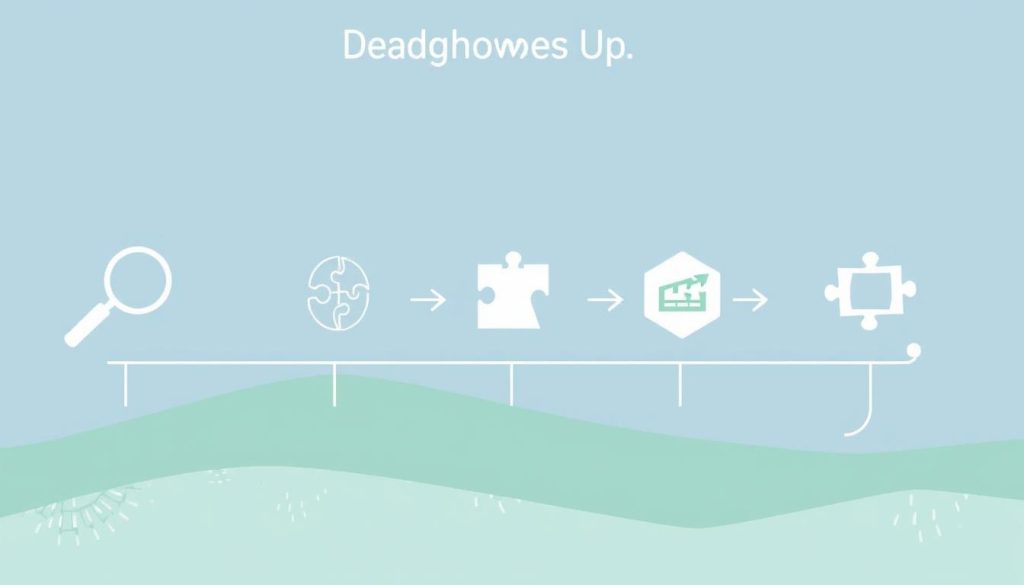
The first step is usually a screening. This might include questionnaires or brief checks by a healthcare provider. If the screening shows possible autism traits, a deeper evaluation will follow.
A detailed autism test includes:
- Developmental assessments
- Behavioral observations
- Cognitive evaluations
- Interviews with family members
Experts like psychologists, neurologists, or developmental pediatricians do these assessments. They use set tools and criteria to see if someone meets autism spectrum disorder’s diagnostic needs.
The autism diagnosis process can change based on age. For kids, pediatricians often do the first screenings. Adults might need to see mental health professionals or autism specialists.
Getting an accurate diagnosis is key for getting the right support and help. If you’re worried about autism symptoms, don’t wait to get professional help to start the diagnosis.
Professional Assessment and Evaluation Methods
Getting an autism diagnosis involves several steps and specialized tools. Medical professionals use various methods to assess and evaluate individuals for autism spectrum disorder.
Diagnostic Tools and Tests
Autism diagnosis relies on a range of tools designed to evaluate behavior, communication, and development. Some common diagnostic instruments include:
- Autism Diagnostic Observation Schedule (ADOS)
- Autism Diagnostic Interview-Revised (ADI-R)
- Childhood Autism Rating Scale (CARS)
- Modified Checklist for Autism in Toddlers (M-CHAT)
These tests help professionals gather data on social skills, language use, and repetitive behaviors. They form a key part of the autism diagnosis process.
Healthcare Providers to Consult
A team of specialists often works together to provide a complete autism diagnosis. Key professionals involved may include:
- Developmental Pediatricians
- Child Psychologists
- Speech-Language Pathologists
- Occupational Therapists
- Neurologists
Each expert brings unique insights to the evaluation process. They work together to create a full picture of an individual’s abilities and challenges. This team approach ensures a thorough assessment and helps in developing personalized autism resources for support and treatment.
Supporting Resources and Treatment Options
If you or a loved one has autism, help is out there. Many resources can guide you on this journey. You’ll find support groups and online forums ready to share their experiences and advice.
These communities offer emotional support and practical tips for daily challenges. They can be a lifeline.
Autism treatment varies because each person is unique. Early intervention therapies are key for children. These include speech therapy, occupational therapy, and behavioral interventions.
For adults, treatments aim to build life skills and manage symptoms. Job training, social skills groups, and cognitive behavioral therapy are common. Some find medication helps with anxiety or ADHD.
Remember, treatment aims to improve life quality and maximize abilities, not “cure” autism.
Don’t hesitate to contact autism organizations or healthcare providers for more info. They can guide you to local resources and help with treatment options. With the right support, people with autism can live fulfilling, independent lives.
FAQ
Q: What are the main signs of autism?
A: Signs of autism include trouble with social communication and interaction. People with autism might have repetitive behaviors or interests. They may also be very sensitive to certain sounds or sights.
These signs can show up as trouble keeping eye contact or understanding social cues. It can also mean having a hard time forming relationships or sticking to routines. Unusual reactions to sensory stimuli are another sign.
Q: Can adults be diagnosed with autism?
A: Yes, adults can get diagnosed with autism. Some people, like those with high-functioning autism or Asperger’s, might not get diagnosed until they’re older. Getting a diagnosis as an adult usually means a detailed check-up by experts in autism.
Q: How is autism diagnosed?
A: Diagnosing autism involves a detailed process. It includes developmental screenings and behavioral assessments. Cognitive and language tests, along with medical exams, are also part of it.
Healthcare professionals observe and take notes. A team of specialists, like psychologists and speech therapists, often work together to make the diagnosis.
Q: Is there a cure for autism?
A: There’s no cure for autism, but treatments can help. Therapies like behavioral and speech therapy can improve skills and manage symptoms. Occupational therapy and educational support also play a role in improving life quality.
Q: How does autism present differently in women and girls?
A: Autism in women and girls can look different than in men. Females might be better at hiding their symptoms. They might have more subtle social challenges and different special interests.
They might also face more anxiety or depression. These differences can sometimes lead to missing or misdiagnosing autism in females.
Q: What is the difference between autism and Asperger’s syndrome?
A: Asperger’s syndrome is now seen as part of autism spectrum disorder (ASD). People with Asperger’s often have average or above-average intelligence and strong speaking skills. Yet, they might struggle with social interactions and have intense interests.
Q: Can someone have mild autism?
A: Yes, autism is a spectrum, and some people have what’s called “mild” autism. These individuals might have less noticeable symptoms and face fewer daily challenges. But, even mild autism can greatly affect someone’s life and may need support.
Q: Are there any online tests for autism?
A: Online tools can help spot autism traits. But, they’re not for diagnosing. If you think you or someone you know might have autism, see a healthcare professional for a proper check-up.
Q: What resources are available for individuals with autism and their families?
A: Many resources exist for those with autism and their families. There are support groups, educational resources, and therapy services. Vocational training and online communities are also available.
It’s best to look into both local and national resources to find the right support.












